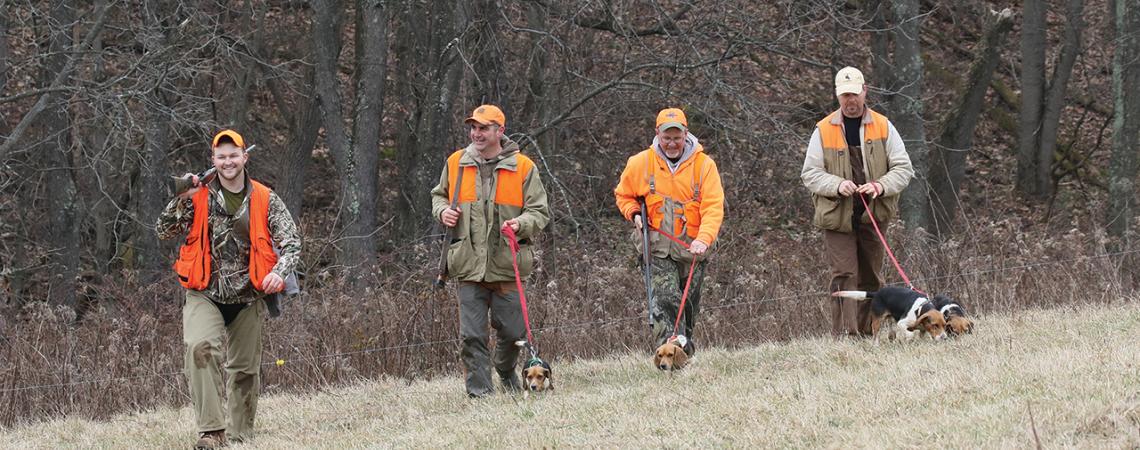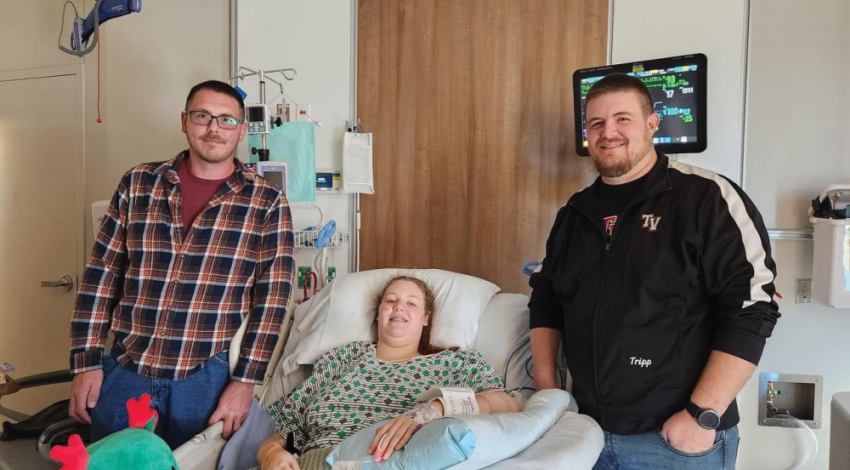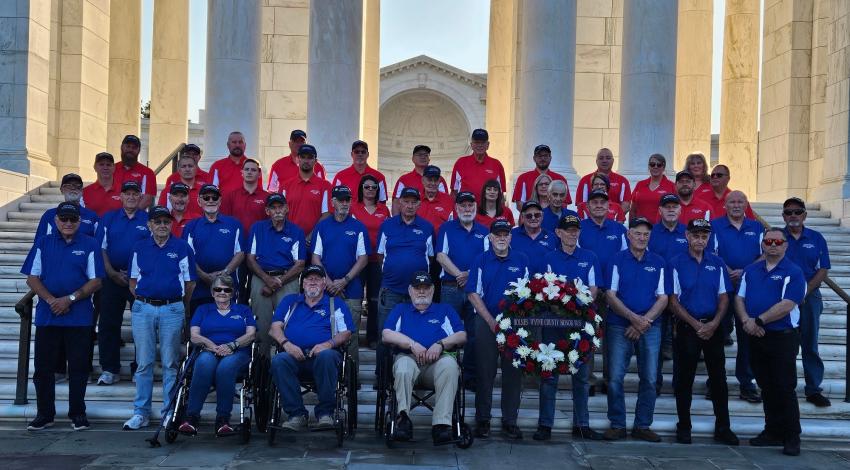Four guys holding on to what is becoming a lost art: Scott Lynch, Dave Miller, Greg Thomas (also shown at left), and Rick Truman, hunting with their beagles. (Photo by Chip Gross)
For some 25 years, I raised beagles for hunting cottontail rabbits. Reluctantly, I gave it up about a decade ago when my oldest dog died. What I miss most about the sport is the sound of the chase.
Hunters call it hound music.
My longtime friend and fellow outdoors writer Mike Tontimonia is another who knows the sound well. A member of Carroll Electric Cooperative in eastern Ohio, Tontimonia estimates he’s owned 150 beagles during his lifetime — both hunters and field-trialers — with as many as 20 dogs in his kennel at any one time.
“There aren’t as many of us as there used to be,” Tontimonia says, referring to the number of rabbit hunters using dogs today. “Raising and training beagles takes a serious time commitment, and that’s a commodity Americans don’t seem to have much of these days, including most hunters.”
Tontimonia has been hunting with beagles so long, he doesn’t even care to take along a shotgun anymore. Instead, he prefers letting others of his hunting party do the shooting. “I just enjoy watching and hearing the dogs work,” he says.
Hunting conditions couldn’t have been better that mid-January morning last winter when I joined Mike and a few of his friends for a hunt. The temperature was just above freezing, with no wind, and the ground was moist — excellent scenting conditions for the dogs. Hot, dry, and windy conditions of early fall cause scents to dissipate too quickly.
Entering a woody briar patch, we didn’t have to wait long before one of four beagles (we had Brooke, Daisy, Gabby, and Ike with us) crossed a fresh rabbit track and opened up in a long, drawn-out howl. The other three dogs soon joined in, and the first chase of the day was on, as the beagles filled the woods with their excited yipping and barking.
Cottontails in quality habitat live their entire lives within about a quarter-mile section of land. They know that parcel intimately, and seldom venture out of it, since all their needs — food, water, and shelter — can be found within that parcel. That explains why, when a beagle strikes a hot rabbit track, it’s the wise hunter who stays put. He knows that if the rabbit doesn’t dive into a hole during the chase, it will eventually circle back to the original jump point, offering a shot.
Tontimonia and his hunting buddies make good use of the rabbits they take, turning them into “hare soup,” a hearty stew with vegetables. “It’s an ugly-sounding name, but the soup’s delicious,” Tontimonia says.
Wildlife biologists in Ohio say that even given a daily bag limit of four rabbits per hunter (which is seldom achieved) and a generous annual hunting season of four months (early November through the end of February), there is no concern of overharvest, because cottontails reproduce like…well, like rabbits; they have up to five litters per year.
When a hunting dog grows old and dies, it takes a little of a hunter’s heart with it. Years ago, when one of my beagles would die, I’d solemnly slip off its collar and bury the dog in a small woodlot on our property, marking the grave with a few large stones. Today, I can still make out the circle of graves from the house, but only when the leaves are off the trees; only when November gets that certain look — and it’s once again time to hunt.
Do hunting dogs go to heaven? If so — and assuming I make it there myself — I should have quite a pack of excellent beagle hounds awaiting me. Look me up. We’ll find a log, sit for a while, and listen to the dogs run.
The 2017 Ohio cottontail rabbit hunting season opens November 3.









